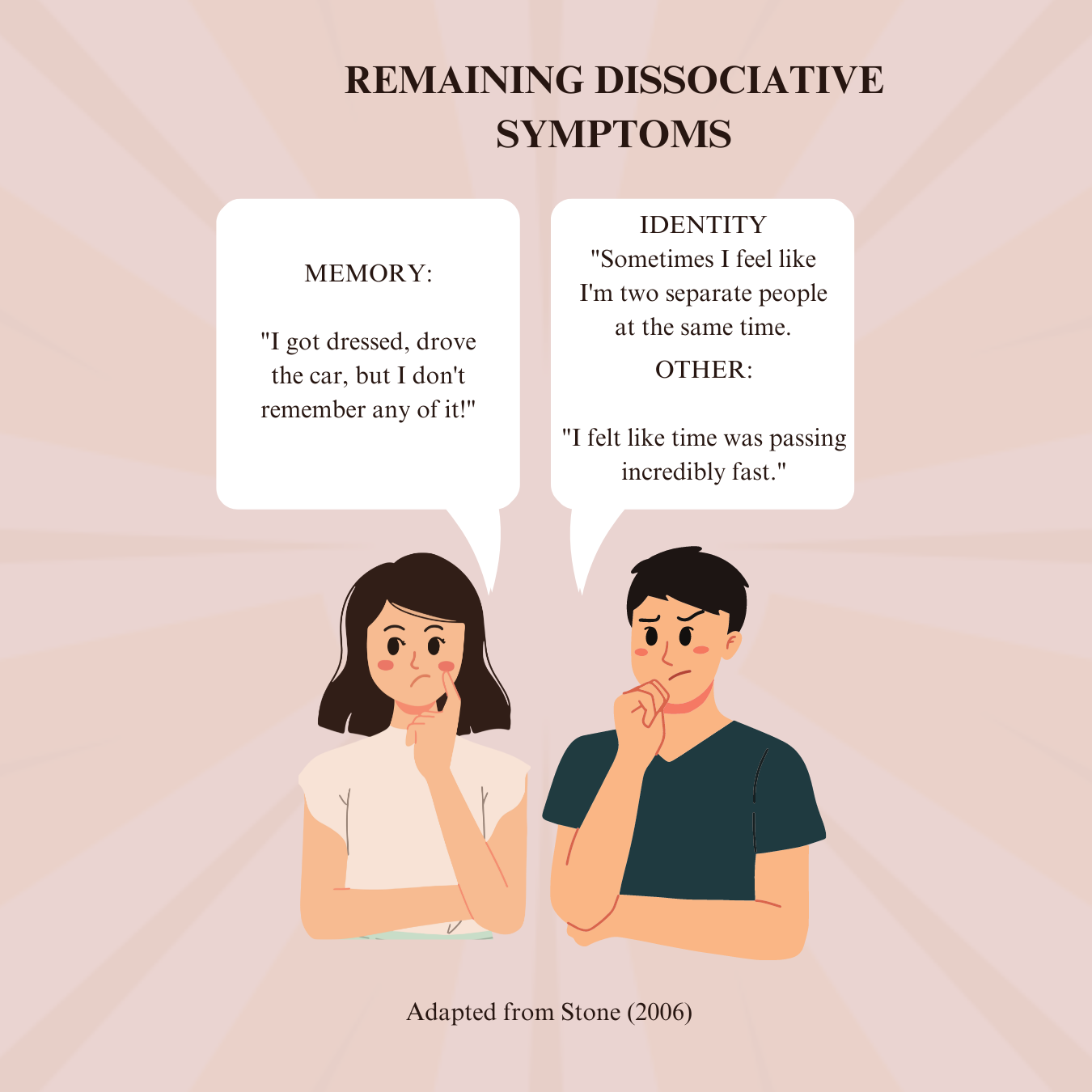Dissociation
Dissociation could be described as a temporary loss of awareness or control over cognitive and physical processes, such as memory, identity, movement and sensation, that are normally easily controlled or involved in conscious functioning. In addition to somatoform (bodily) dissociation, the term itself includes other processes such as depersonalisation (subjective disconnection from the self), derealisation (subjective disconnection from external stimuli), emotional numbing, and impairments of memory and identity.
Depersonalisation thus involves at least two different processes:
'disconnectedness', which refers to a subjective feeling of disconnection from oneself or the world,
'compartmentalisation', which refers to the reversible loss of voluntary control over apparently intact processes and functions.
Dissociation is common and 'normal' in the general population, e.g. daydreaming, as a result of meditation, psychoactive drugs or ecstatic dancing, or as a result of sleep deprivation or extreme fear. In functional neurological disorders, we speak of pathological dissociation (Brown, 2016; Campbell et al., 2022; Pick et al., 2020).
Dissociation is also common in neurological (e.g. epilepsy, migraines, syncope), neuropsychological (functional weakness, dissociative seizures) and psychological disorders (depression, PTSD; Stone, 2006).
Summary (Stone, 2006)
Dissociation is an umbrella term that covers many processes. Most commonly, we speak of either depersonalisation (feeling disconnected from the self) or derealisation (feeling disconnected from the environment).
Dissociation is a common phenomenon and occurs in normal populations as well as in many neurological, neuropsychological and psychological disorders.
Dissociative symptoms can precede dissociative attacks or acute functional weakness.
Patients are often reluctant to report dissociative symptoms, if at all, partly because they fear they are 'losing their mind' and that they will appear 'crazy'.
-
Brown, R. J. (2016). Dissociation and functional neurologic disorders. Functional Neurologic Disorders, 85-94. doi:10.1016/b978-0-12-801772-2.00008-4
Campbell, M. C., Smakowski, A., Rojas-Aguiluz, M., Goldstein, L. H., Cardeña, E., Nicholson, T. R., ... in Pick, S. (2022). Dissociation and its biological and clinical correlates in functional neurological disorder: a systematic review and meta-analysis. Journal of Neurology, Neurosurgery & Psychiatry, 93(12), e3.
Pick, S., Rojas-Aguiluz, M., Butler, M., Mulrenan, H., Nicholson, T. R., in Goldstein, L. H. (2020). Dissociation and interoception in functional neurological disorder. Cognitive Neuropsychiatry, 1-18. doi:10.1080/13546805.2020.1791061
Stone, J. (2006). Dissociation: what is it and why is it important?. Practical Neurology, 6(5), 308-313.




